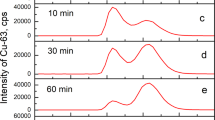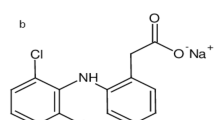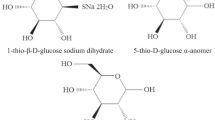Abstract
UNTIL the report by Werner and Block1, it was generally thought that at most only very small quantities of iodinated tyrosines are present in normal human serum. This conclusion was based on 131I-chromatographic studies using plasma extracts from subjects given radioiodine. Werner and Block report, however, that when the iodine distribution in normal human serum is analysed chemically by the ceric–arsenite reaction2, approximately half the circulating iodine is present in the form of monoiodotyrosine or di-iodotyrosine, although the radioactivity in the same chromatogram is distributed according to the results of other workers. Hitherto these results have been very difficult to understand, and they are inconsistent with the rapid deiodination seen when iodotyrosines are injected3. We have recently confirmed Werner and Block's results indicating a discrepancy between the distribution of stable and radioactive iodine, when using very similar methods to estimate the distribution of iodinated amino-acids in human serum. Our extraction and chromatographic techniques differed from those of Mandl and Block4 only in that the acidified serum was extracted three times with butanol and that the chromatogram was unidimensional and run in acid-butanol/2 N acetic acid (1 : 1). We find that when the chromatogram of serum collected 48 hr. after a 100 µc. dose of iodine-131 is scanned for radioactivity little or no counts are recordable in the mono- or di-iodotyrosine positions, whereas when the same Chromatograms are evaluated chemically for iodine by the ceric–arsenite reaction, iodotyrosines appear to be present in considerable quantity.
This is a preview of subscription content, access via your institution
Access options
Subscribe to this journal
Receive 51 print issues and online access
$199.00 per year
only $3.90 per issue
Buy this article
- Purchase on Springer Link
- Instant access to full article PDF
Prices may be subject to local taxes which are calculated during checkout
Similar content being viewed by others
References
Werner, S. C., and Block, R. J., Nature, 183, 406 (1959).
Bowden, C. H., and Maclagan, N. F., Biochem. J., 56, 7 (1954).
Stanbury, J. E., Kassenaar, A. A. H., Meijer, J. W. A., and Terpstia, J., J. Clin. Endocrinol., 15, 1216 (1956).
Mandl, R. H., and Block, R. J., Arch. Biochem., 81, 25 (1959).
Author information
Authors and Affiliations
Rights and permissions
About this article
Cite this article
DIMITRIADOU, A., FRASER, T., SLATER, J. et al. Staining for Iodine in Chromatograms of Human Plasma: an Artefact due to Thiourea or Thiouracils. Nature 187, 691–693 (1960). https://doi.org/10.1038/187691b0
Issue Date:
DOI: https://doi.org/10.1038/187691b0
This article is cited by
-
Iodotyrosine-Like Substances in Human Serum
Nature (1964)
-
Activation Analysis of Paper Chromatograms for Iodine (127I→128I)
Nature (1963)
Comments
By submitting a comment you agree to abide by our Terms and Community Guidelines. If you find something abusive or that does not comply with our terms or guidelines please flag it as inappropriate.



